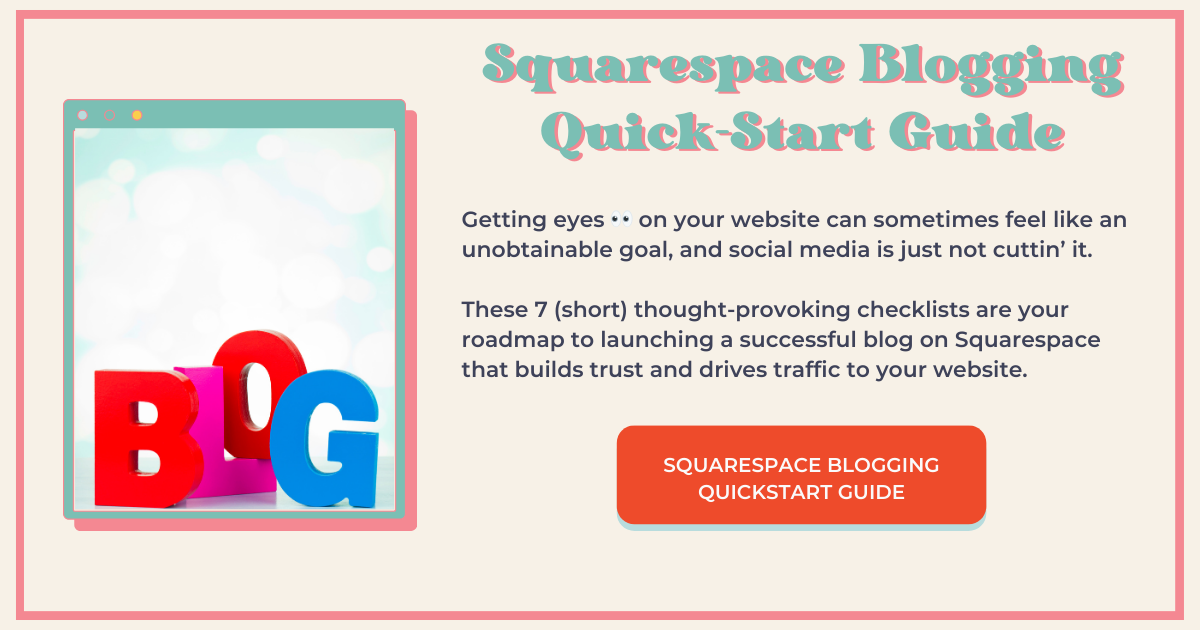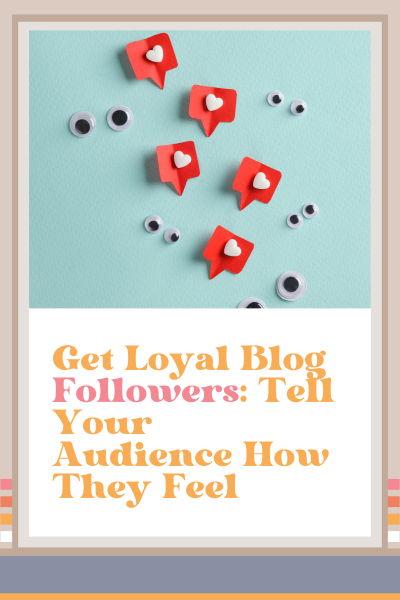Get Loyal Blog Followers: Tell Your Audience How They Feel
If you want to resonate with your readers, tell your audience how they feel
When you read a blog that reflects your feelings, challenges, and aspirations, it feels as if the writer has taken a dive into your daily life, returning with insights that speak directly to you and your experiences.
You feel understood and like the author “gets you”—like you’re on the same team!
When the writer also empathizes with your pain and demonstrates their ability and authority to solve the problem, you trust them, and if they’re REALLY good, you remember them and come back for more help in the future.
By definition, you become a loyal follower.
If this is the kind of relationship you want to build with your readers in your business, keep reading.
Understand Your Audience
The first step in telling your audience how they feel is to truly understand them. This means going beyond basic demographics and digging into psychographics—values, concerns, aspirations, and challenges.
This is why having a brand message will help you blog for your business. Your brand message defines everything about your business, especially your audience. It’s the foundation of your business, not just your blog.
If getting a brand message is a bit over your head right now, don’t let that stop you from blogging. Blogging is a great way to develop your brand message and really figure out what you’re all about.
Here are some questions to ask yourself about your audience or the type of people you want to attract through your blog and do business with:
What are their core values?
What are their main concerns as they pertain to your business?
What challenges or pain points do they face?
What feelings motivate them to make a decision?
What are their aspiration? Who do they want to be or become?
Reflect Their Reality Back at Them
When you can mirror the reality of your readers back at them, you convey to them that you understand them.
Use their language, not insider-language, to communicate without being condescending or patronizing.
Share stories and examples that reflect their experiences so they know you’re not bullshitting. When you discuss a problem, detail it in a way that shows you truly grasp their struggle.
For instance, if your audience is spending too much time on social media in an attempt to grow their business and it’s not working, talk about doom-scrolling, feeding the content beast, and how Instagram is a total time-suck that rarely results in business growth. (Whoops! Was that a Freudian slip?)
Show Empathy and Offer Solutions
While it’s crucial to echo your readers' emotions and challenges, it's equally important to demonstrate how you empathize with them and then offer solutions.
This can be a fine line to walk—your content should provide comfort and make your readers feel understood without assuming a tone of superiority. In other words, don’t brag or talk too much about yourself, it’s off-putting.
Offer advice like a friend who’s walked the same path, not like an elitist lecturing from on high. Your goal is to be approachable and relatable, so your solutions should feel attainable and realistic and on their level.
Use Emotional Triggers Wisely
Emotional triggers can dramatically increase engagement by prompting an emotional response. These can be positive (hope, excitement, amusement) or negative (fear, frustration, anger), but they should be used with care.
The aim is to stir up feelings that motivate the reader, not manipulate or exploit.
Get too positive and it feels implausible, like you’re overselling or overcomiting.
Get too negative and it turns them off. No one likes a Debbie downer.
Let them know how they feel to the extent that it conveys your empathy and understanding of what they’re experiencing emotionally and nothing more.
Does that make sense?
Crafting Your Voice and Setting Your Tone
The tone of your blog plays a crucial role in how your message is received.
Your tone is going to be determined by…well…YOU!
The more authentic you are, the more that will naturally come across in your writing and your readers will recognize your genuineness.
Your blog is a place to be conversational and sincere. Don’t try to be something or someone you’re not. You don’t have to be funny and clever if that’s not who you are.
And by the way, if that’s not who you are, that’s okay. You have friends. How do you talk to them?
Talk to your readers like they are your friends too. Be consistent in this tone across all your posts to strengthen your brand voice and make your blog a familiar space for your readers.
Engage and Interact
Don’t let your blog be a one-way street. Encourage interaction through comments, social media shares, and emails.
Ask questions at the end of your posts to invite responses. Consider running polls or surveys to gather insights about your readers' current challenges and interests.
Engagement isn’t just about keeping your current readers interested—it’s also about drawing in new followers through visible activity and interaction.
The Takeaway
Attracting a loyal following through your blog requires more than just regular postings of well-written content. It demands a deeper understanding and reflection of your audience’s emotional landscape.
By telling your audience how they feel, you do more than capture their attention—you make them feel seen and understood. This emotional connection is what will keep them coming back for more, turning casual readers into loyal followers.
Was this helpful?
Have you ever found yourself nodding along to a blog post, feeling as if the author was speaking directly to you? Was it easier for you to remember them the next time you hit a wall? Share your thought in the comments. 👇
This page contains affiliate links
Like this post?










